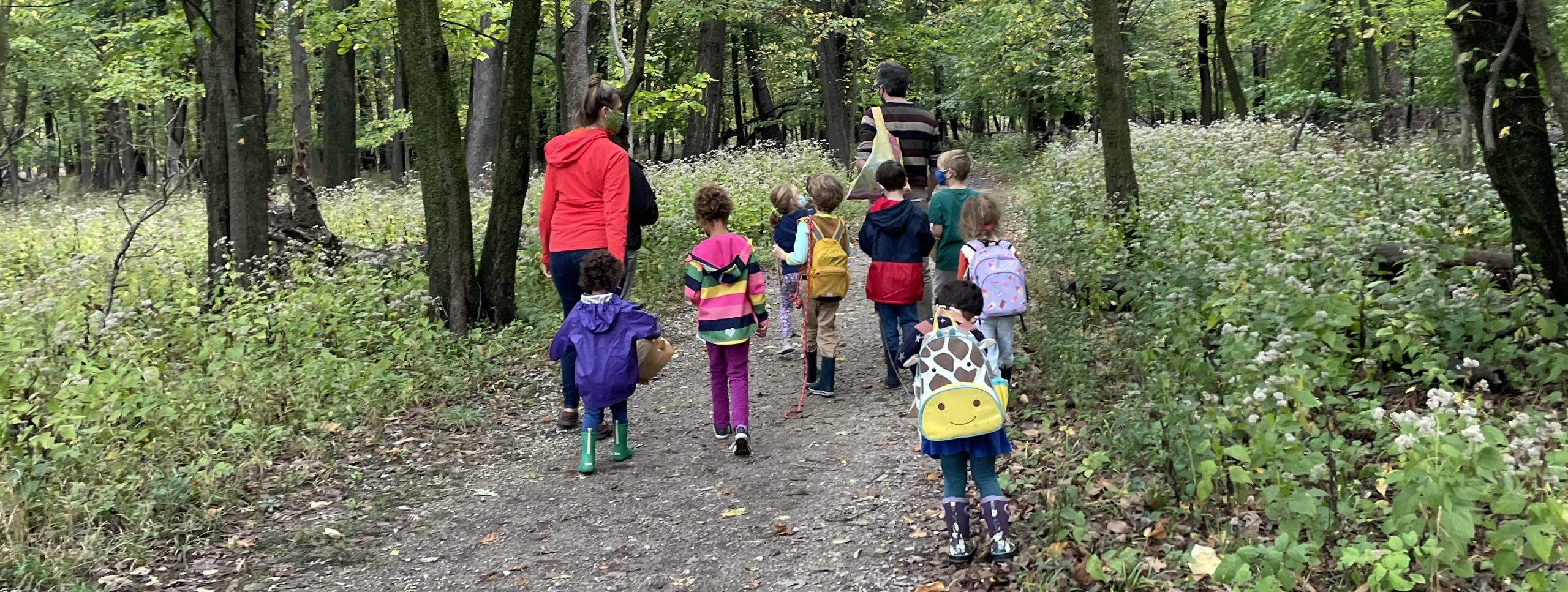On Thursday we talked over camouflage and natural selection from the perspective of both predator and prey.
For the first exercise, everyone got a paper bag and stuffed it with leaves, then we threw them in a pile and sorted them (loosely) by color. All the kids grabbed a leaf of each color and threw them in the middle of the field. Then they ran around at random and grabbed the first leaf they saw. Back at the picnic table, we talked about how they chose the leaf: was it just the closest? Did it somehow catch their eye, perhaps with a bright color? What was their decision-making process? I told them that they were acting like predators, looking for prey. We discussed how leaves that blend in with the grass probably did a better job of evading us.
Next, we switched to prey! I told them they were bunnies, and I was a predator. They each got an Othello token and a six-sided die. They flipped the token to determine if they had dark fur or light fur, and I named the environment (e.g., night, or a snowy plain, or a dark forest). Then they rolled the die. The rules were: 1, 2, I eat you, 3, 4, depends on your fur, 5, 6, I get nix. Anyone who rolled a 1 or 2 got eaten (giving me their token), anyone with 5 or 6 survived, and the 3s and 4s survived if they had the right environment/fur combination (e.g., in a dark forest the bunnies with dark fur evaded me). The eaten bunnies got to pick a surviving bunny to be their parent, and then they (as baby bunnies) got the same fur color as that bunny. We noticed that over time, for each environment, there were more and more bunnies with the advantageous color of fur. (The last round, miraculously or perhaps suspiciously, all the bunnies survived! So I, the predator, rolled over and died.)
Then I got to relate the famous anecdote of the peppered moths! We brought up how these animals aren’t consciously choosing their appearance; none of them are deciding what to look like. It’s all part of this larger phenomenon of natural selection.
We had a few minutes left over (😰) so we picked a tree and talked about its “choices”… If it’s dropped its leaves, it’s missing out on some food but it’ll be safer when the snow comes. If it’s kept its leaves, it’s taking a risk for a bit more food. And so on.

